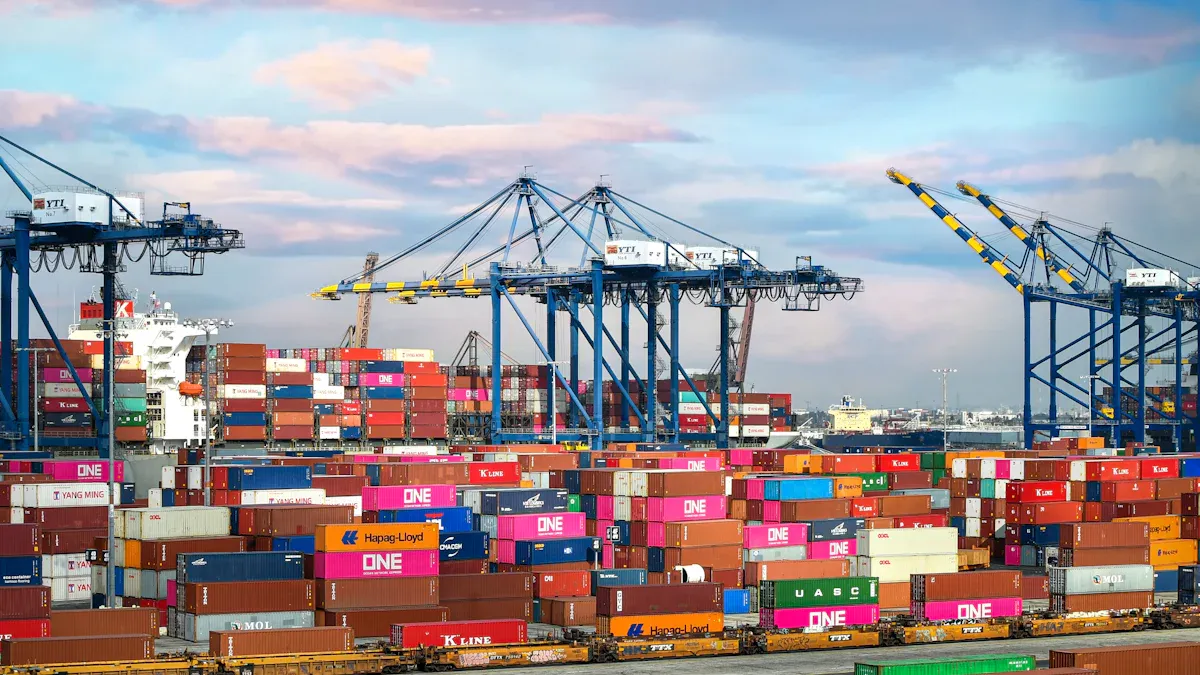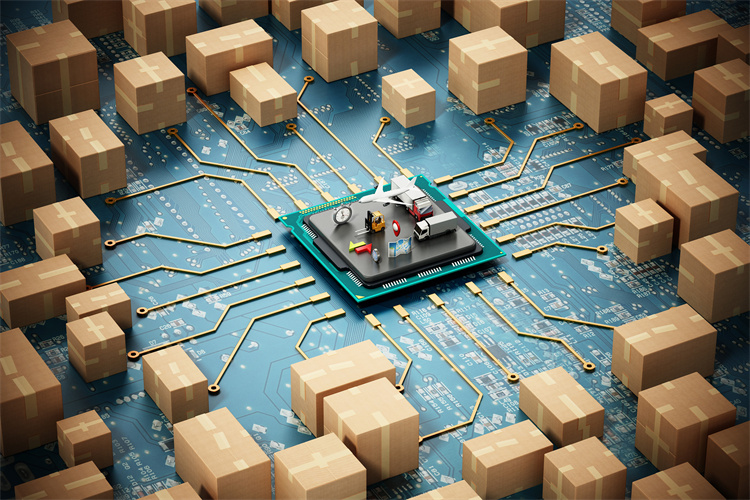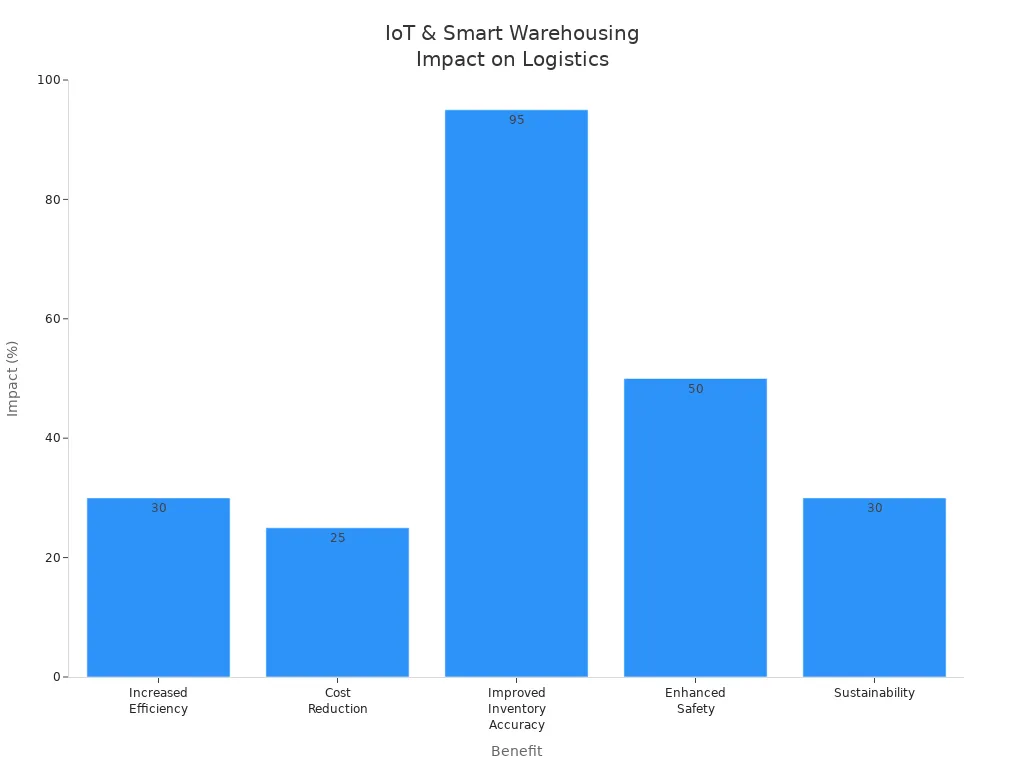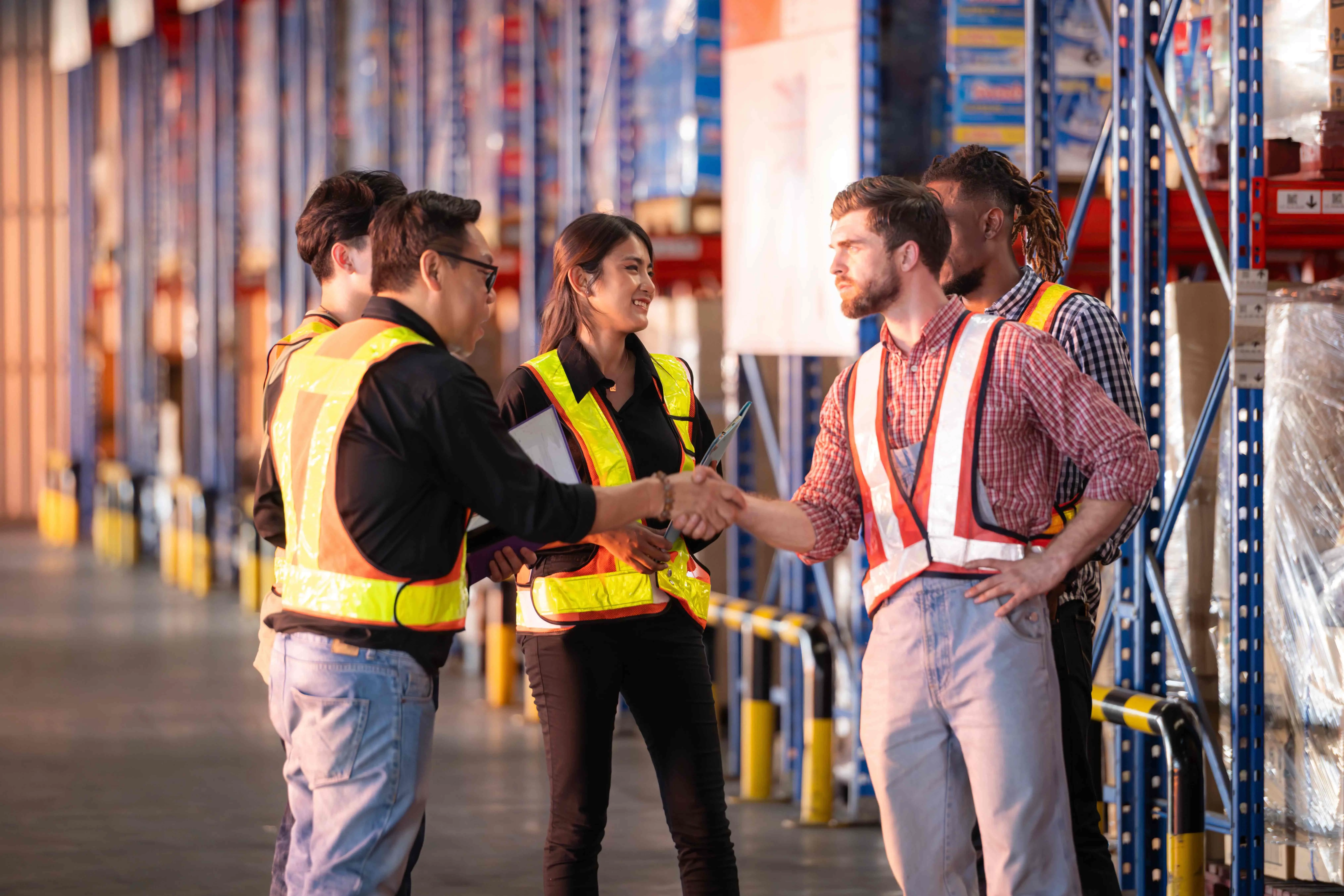Unlocking New Opportunities in Modern Logistics for 2025

The global logistics industry is projected to be worth $11.23 trillion by 2025, driven by the rapid growth of automation and e-commerce. As logistics needs evolve, companies must transform how they manage their operations by adopting innovative strategies and seeking new opportunities. JUSDA stands at the forefront with its intelligent supply chain solutions, helping businesses stay ahead of emerging logistics trends in 2025. Nearly all logistics decisions will be powered by automated AI, revolutionizing how organizations address logistics needs and prioritize environmental sustainability.
Metric
Projection/Value
Notes
Global logistics market valuation (2025)
$11.23 trillion
It grew from $8.96 trillion in 2023. It may reach $15.79 trillion by 2028.
CAGR (2023-2028)
6.3%
This shows steady growth from trade and new infrastructure.
E-commerce logistics market size
Over $535 billion
It is growing fast because of cross-border trade and micro-fulfillment.
Automation CAGR
12.8%
Robots and machine learning make work faster and easier.
Labor shortage in U.S. logistics sector
Over 2 million workers by 2025
There are not enough workers. People need new skills and more automation.
AI market in logistics (2025)
$26.35 billion
It grew from $17.96 billion in 2024. It may go over $700 billion by 2034.
Key Takeaways
AI and automation are changing logistics. They make work faster. They help companies do tasks more accurately. They also help companies guess what customers will want. They help companies handle risks better.
Sustainability is very important. Companies need to use green warehousing. They should use eco-friendly transportation. They must follow new environmental rules. This helps save money. It also helps protect the planet.
Good supply chains need real-time data. They need more than one supplier. They use smart risk management. This helps them stay flexible. It helps them avoid problems.
AI and Automation in Logistics Trends 2025

Artificial intelligence and automation are changing logistics in 2025. Companies spend money on robots for cross-docking and sorting. They also use them for real-time inventory management. JUSDA’s JusLink AI uses machine learning and real-time data. It helps predict demand, plan routes, and manage risks. JusLink’s smart agents help get materials ready and stock deliveries. They also help with logistics management. This makes work faster and more correct.
JUSDA’s JusLink AI Solution
JUSDA’s JusLink AI looks at supply chain data with machine learning. It predicts what will happen next. The system gives real-time data for freight rates and sales demand. It also helps plan when to restock. JusElsa is a smart helper that answers customer questions and tracks orders. JusLink’s risk control tower watches for problems and warns early. This helps people make good choices before trouble starts.
Automation in Warehouse Operations
Warehouses now use robots and IoT sensors to help work. These tools let warehouses work all day and night. They cut down on mistakes and make orders faster. JUSDA’s warehouses use new automation for picking and packing. They also use it for tracking inventory. Companies say they work up to 30% faster now. They also spend 35% less on manual labor.
Predictive Analytics for Logistics Needs
Machine learning and automation help with predictive analytics in logistics. These tools guess demand and plan the best routes. They find risks before they cause slowdowns. IoT devices and cloud platforms show what is happening right now. This helps companies change plans fast. New technology like digital twins and generative AI test supply ideas. This helps make logistics strong and efficient.
Sustainability in Logistics

Sustainability is very important for logistics in 2025. Companies must follow new rules and meet what customers want. Green logistics is not a choice anymore. It is now required. Governments ask for reports about sustainability and emissions. They want proof that companies help the environment. Companies need to change fast to keep up and follow the rules.
Green Warehousing by JUSDA
JUSDA is a leader in green warehousing. Their warehouses use less energy with smart systems. They have semi-automated storage that saves power. JUSDA uses renewable energy in its buildings. They also use better inventory management to waste less. These upgrades help clients save money and meet tough green rules.
Eco-Friendly Transportation
JUSDA helps with eco-friendly transportation. They use electric vehicles and plan routes with AI. Their systems watch emissions and pick cleaner ways to travel. JUSDA works with others to share trucks and cut empty trips. These steps lower pollution and make work better.
Meeting Regulatory and Market Demands
New rules like the EU’s CSRD and ETS make companies report emissions. The table below shows some rules and what they do:
Regulation/Initiative | Description | Impact on Logistics Companies |
|---|---|---|
CSRD | Needs detailed sustainability reports | Makes companies plan and share more |
EU Taxonomy | Sets rules for green investments | Helps companies go green faster |
ETS Expansion | Raises fuel costs, tracks emissions | Makes companies use cleaner tech |
To follow these rules, businesses plan better routes and use electric vehicles. They buy new digital tools. They teach workers and tell customers about their green progress.
Supply Chain Resilience and 2025 Logistics Trends
In 2025, global supply chains have new problems. Companies have longer supply chains now. They also face more risks if they use only one supplier. Natural disasters, money problems, and world conflicts cause big disruptions. So, making supply chains strong is very important. Trends show that businesses need flexible supply chains. This helps them keep working well.
Diversification Strategies
Diversification means not depending on just one supplier. Companies use many countries to get products. They also split shipments to stay flexible during delays. Onshoring and nearshoring move production closer to home. This lowers risks and helps companies feel safer. Good relationships with suppliers are important. Talking often helps spot problems early. These plans help supply chains change fast and recover from trouble.
Companies with many suppliers and routes keep products moving. They can do this even when there are big problems. Keeping extra inventory helps balance just-in-time needs with being prepared.
Real-Time Visibility with JusLink
JUSDA’s JusLink platform helps companies see their supply chain. It uses real-time tracking and shares data. GPS, IoT sensors, and AI work together. They show where goods are and how they move. Warehouse systems and cloud tools help teams check inventory and shipments. Real-time visibility lets companies act fast and avoid delays.
JusLink dashboards and alerts help people make quick choices.
Real-time tracking makes companies more flexible and helps them serve customers better.
Risk Management in Global Networks
Risk management is very important for supply chains. Companies use digital twins and AI to guess problems and test ideas. JusLink’s risk control tower watches for trouble and warns early. Good plans include using many suppliers and having backup plans. Following rules is also important. These steps help companies keep working and be more efficient.
Companies that use technology and good risk plans keep supply chains moving, even when there are big problems.
Customer-Centric Logistics Needs
Personalization and Last-Mile Delivery
Logistics companies now try to meet each customer’s needs. They use advanced personalization and last-mile delivery solutions. Contactless delivery makes things safer and easier for everyone. Smart locker systems let people pick up packages when they want. This keeps packages safe and helps the environment. Crowdsourced delivery platforms help companies work faster and be flexible in local areas. Electric and hybrid vehicles help the planet and keep deliveries quick. Route optimization software uses real-time data to change routes fast. This makes deliveries quicker and more dependable. Transportation Management Systems (TMS) give real-time updates and help manage fleets. They also work with electric vehicle systems to save time and energy.
87% of shoppers like businesses that offer special shipping choices.
62% of shoppers say fast delivery is very important to them.
49% of people shop online more if they can get same-day delivery.
88% of customers will pay extra to get their orders faster.
These facts show that companies must focus on fast and flexible last-mile delivery. This helps them keep up with what customers want.
Transparency and Communication
Being open and clear is important for making customers happy. TMS helps shippers, carriers, and customers talk easily. It uses real-time messages and updates. Customers can see where their packages are with tracking systems and portals. This builds trust and helps people feel less worried. Real-time tracking lets customers know when their package will arrive. Open communication keeps everyone updated and stops confusion. Personalized updates and early messages make customers feel special. Sharing information helps people make better choices and work together. This helps companies improve their logistics and build strong relationships.
Leveraging Customer Feedback with JUSDA
JUSDA listens to what customers say to check if they are happy. The company uses feedback to find out what causes problems. Then, they fix these issues to make their service better. When JUSDA solves problems that happen a lot, customers trust them more. Quick surveys let customers share their thoughts right away. This helps JUSDA fix problems before they get bigger. By listening and changing, JUSDA makes sure customers’ needs are met. Their services keep getting better over time.
Digitalization and Data-Driven Logistics Trends
Digitalization is making logistics different in 2025. Companies use smart tools to help them work faster. These tools help people make better choices. They connect systems like TOS, TMS, and YMS for sharing data right away. This lets teams track shipments and manage resources with cloud solutions. AI helps with guessing what will happen and planning routes. Blockchain makes supply chains safer and easier to see. Autonomous vehicles and drones deliver goods fast and safely. Companies also use advanced transportation management systems for tracking and AI-powered choices.
IoT and Smart Warehousing
IoT cargo tracking is now used in smart warehouses. Sensors and RFID tags collect data all the time. This helps companies know where products are and keep inventory correct. The table below shows how IoT and smart warehousing help logistics:
Benefit | Impact/Statistic | Example Company |
|---|---|---|
Increased Efficiency | Up to 30% reduction in operating costs | Amazon |
Cost Reduction | Approximately 25% cost savings | Walmart |
Improved Inventory Accuracy | Over 95% accuracy in inventory levels | Walmart |
Enhanced Safety | Up to 50% reduction in workplace accidents | Lenovo |
Sustainability | Up to 30% energy savings | IKEA |

Advanced Analytics in JUSDA Operations
JUSDA uses advanced analytics to make supply chains better. Data analytics helps teams guess demand and plan routes. AI and machine learning find patterns and give advice. These tools help manage inventory and lower costs. Real-time tracking lets teams act fast when things change. JUSDA’s smart warehouses use analytics for better storage and quick order picking. This gives better service and saves money.
Case Study: JUSDA’s Global Expansion
JUSDA’s global expansion shows how digitalization helps. The company uses AI, blockchain, and IoT to make cross-border trade better. IoT devices track shipments and check conditions. Blockchain platforms make things safer and build trust with partners. JUSDA works on sustainability by planning better routes and using new fuels. These steps make a strong, clear, and efficient global logistics network.

JUSDA Solutions
To provide you with professional solutions and quotations.
Logistics leaders find new chances in 2025 by using new ideas, digital tools, and caring for the planet. To keep up with others, companies should:
Use AI and automation to work faster and better.
Spend money on ways to help the environment.
Make their supply chains stronger.
Use real-time data to make smarter choices.
Work with experts such as JUSDA.
See Also
How Artificial Intelligence Is Transforming Future Supply Chains
Digital Innovations Paving The Way For Logistics Advancement
Discover The Latest Trends In Sea Freight Logistics 2024
Exploring Hidden Opportunities Of AI Within Logistics Industry
Technological Advances Driving The Future Of Logistics Today
